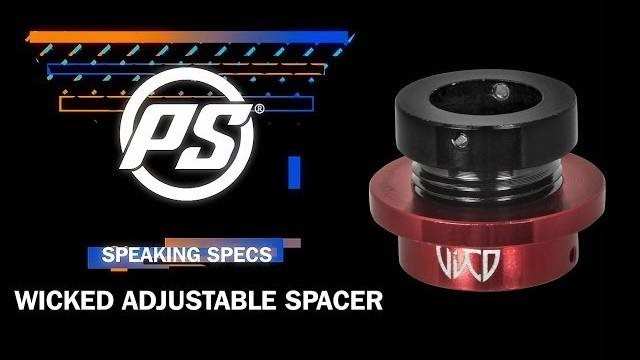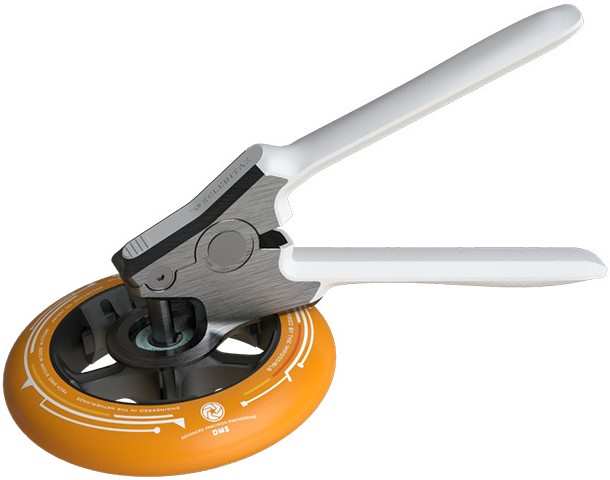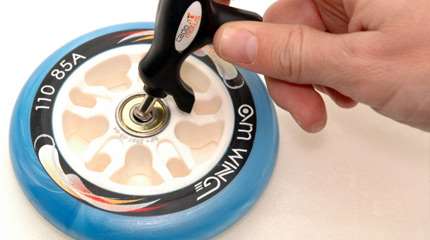The double push: the ultimate skating technique?
The words 'double push' often sound like a great mystery to the ears of speed skaters. The double push is a subject much written about on the Internet forums. It is surrounded by numerous legends, the obscurity of which we will to try to clarify...
Par alfathor
The myth of the double push
Every speed skating beginner is amazed by that skating technique, which sounds a bit like the Graal of speed skating technique.
Even if it proves to be very efficient once mastered, there are several things you should know about that technique…
- The double push is not to be used permanently, it only suits specific race situations;
- That technique is efficient only if you are relaxed doing it, otherwise it becomes energy-greedy;
- You need quite a high speed to start the double push;
- Some skaters already master it without knowing it, a bit like Molière’s Monsieur Jourdain who speaks prose without knowing it…
What is the double push?
The double push, as the name implies, is made of two pushing phases in the same stride:
• while going away from the body, the foot pushes with the inside edge
• while coming back to the body, the foot pushes with the outside edge
An example?
Cross-overs during bends for example, are a type of double push. There is a short momentum during which the skater simultaneously pushes on the inside edge of his right skate and on the outside edge of his left skate (just like on the video with Joey Mantia).
When to use the double push?
It is mostly used punctually, during powerful long sprints. It is also used to regain speed. There are but a few skaters who manage to do it easily enough not to spend too much energy on it.
Is that technique hard to get?
We can only give you an equivocal answer: yes and no. Some people already master the technique without knowing it. You can instinctively adopt it by dint of skating and willpower for speed.
Writings upon the subject abound, it is not an easy technique to grasp, even with high level skaters. The skaters who manage to use that specific technique with efficiency are few.
Many tutorials exist to understand the movement, which is quite easy to comprehend, but assimilating it needs a little more time. Then remains the question of the relevance of its use. As mentioned above, it is an energy-greedy technique if not enough mastered.
Dissection
- The first push is a classic push to the side on the inside edge of the skate
- The opposite skate follows with a rolling phase
- The second push starts just before the end of the first one: the bearing foot, which was in a rolling phase, does a slight push with the outside edge
- The foot of the first push comes back in the body axis
- The circle is complete
Tips
Around the end of the first push, there is a very short momentum during which the two pushes are simultaneous.
You need quite an important speed to do the double push.
For the double push to be really efficient, you should go through a phase of strong unbalance, during which your center of gravity swings toward the outside of the polygon represented by your skates.
A few simple drills to get acquainted with the double push
Understanding the use of inside and outside edges
In order to understand the double push, you should grasp the notion of inside and outside edges. Once you’ve got it, you can play with them!
Learning to slalom
In order to learn to use your edges, there is nothing like slalom!
1. Put a few cones in line
2. At first, try to do the fish (with joint feet) in order to comprehend the notion of edge shifting
3. Then, once you are better at ease, do the drill again on one foot
Once you can feel the weightbearing shifts on both your feet, you can get started on drills dedicated to the double push.
And for that, the best is to have a look at the video opposite made by Eddy Matzger! He suggests a whole series of drills to master the DP.
Useful links
Double push with Yann Guyader sur tapis (RollerTV)
Chad Hedrick in Korea
Translation: Chloé Seyres
Photos: alfathor




Zamikhaya aka Joey mantia
21 décembre 2014 at 15 h 13 min